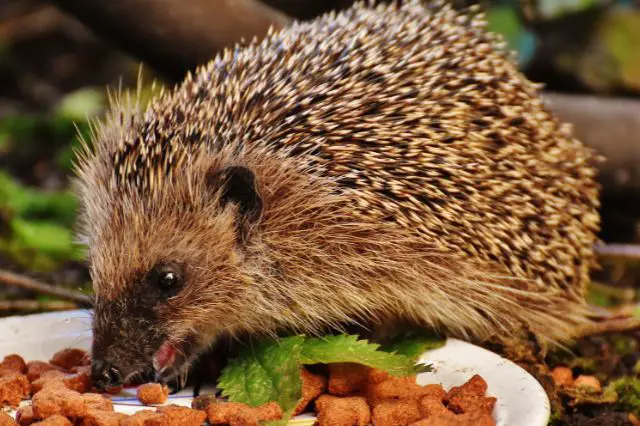Hedgehogs are fascinating creatures known for their adorable appearance and unique defensive mechanism of rolling into a spiky ball. You might know a few things about hedgehogs, but there are many fun facts about these spiky creatures.
Are hedgehogs good pets? What do hedgehogs eat? Do hedgehogs lay eggs? Are hedgehogs fast? Are hedgehogs dangerous? This blog post delves into the top 10 unknown facts about hedgehogs, shedding light on their behavior, characteristics, and remarkable adaptations.
#1. Hedgehogs are a Diverse Species
There are more than 17 species of hedgehogs spread across the world. While the most common is the European Hedgehog, others, such as the African pygmy hedgehog and the desert hedgehog, exhibit distinct characteristics. The size, coloring, and environmental preferences of these species vary.
#2. Hedgehogs are Nocturnal Creatures
Hedgehogs are nocturnal; they are most active at night. These prickly mammals have strong senses, including remarkable hearing ability and a well-developed sense of smell. These characteristics let hedgehogs navigate and find food in the dark. Still, their eyesight is relatively poor, so they rely more on hearing and smell senses.
#3. Hedgehogs Prefer an Insectivorous Diet
Hedgehogs’ diet typically consists of insects. They have a remarkable appetite for pests like slugs, snails, beetles, and worms, making them beneficial garden visitors. However, their diet is not limited to insects alone. Depending on their availability, they are opportunistic feeders and may consume small vertebrates, fruits, and fungi.
#4. Hedgehogs are Adapted to Hibernation
Hedgehogs hibernate during the winter months. They prepare for hibernation by accumulating fat reserves during the autumn. They also construct nests of leaves and twigs, often hidden in vegetation piles or underground caves. During hibernation, their body temperature decreases, and their heart rate slows dramatically. Doing this helps them preserve energy when hibernating.
#5. Hedgehogs Use Spikes for Defense
When a hedgehog feels threatened, it rolls into a tight ball, exposing its sharp spines as a defensive mechanism. But are Hedgehog’s spines venomous? Although their spines aren’t poisonous, they deter predators.
The spines are modified hairs commonly known as quills. Hedgehog quills are formed of keratin, the same protein found in human hair and nails. The quills are sharp but not barbed, allowing them to penetrate an intruder’s skin easily.
#6. Hedgehogs are Good Swimmers
Despite their seemingly cumbersome appearance, hedgehogs are surprisingly excellent swimmers. They can easily paddle through water bodies, using their buoyant spines to stay afloat. While they do not typically seek out water, hedgehogs may swim across small streams or ponds if necessary to reach food sources or escape danger.
#7. Hedgehogs are Remarkable Navigators
Hedgehogs possess a remarkable navigational skill called “homing instinct.” They have an innate ability to remember specific routes and familiar territories. Hedgehogs rely on landmarks and scent trails to return to their nests or preferred foraging areas. They create mental maps of their environment, enabling them to navigate efficiently.
#8. Hedgehogs Replace Old Quills by Quilling
Hedgehog quills are hollow hairs made of keratin, similar to human hair and nails. These spines serve as an effective defense mechanism and are replaced periodically throughout their lives. Hedgehogs undergo a process of replacing old quills with fresh ones. This process is known as “quilling,” it happens to hoglets in the first few months of life.
#9. Hedgehogs Communicate through Snuffling
Hedgehogs communicate through various vocalizations, including grunts, snorts, and snuffles. These sounds help them convey information to other hedgehogs, particularly during mating season. Additionally, they use scent marking as a form of communication, leaving behind pheromones in their urine and feces to signal their presence and territory boundaries.
#10. Hedgehogs Have a Good Lifespan
Hedgehogs can survive in the wilderness for an average of 2-4 years. This lifespan can extend to 8 years if given adequate care and good living conditions. However, they can live for over eight years if kept as pets. This lifespan makes them long-term friends for those who own them as pets. Proper diet, a comfortable habitat, regular veterinary check-ups, and mental stimulation contribute to their longevity and overall well-being.
The Wrap Up
Hedgehogs continue to captivate us with their endearing appearance and intriguing behaviors. These prickly mammals hold many lesser-known secrets, from their diverse species to impressive adaptations.
Whether encountered in the wild or cherished as pets, hedgehogs will always be fascinating creatures that spark curiosity and bring joy to those who engage them. It is essential to provide them with proper care, including a suitable habitat and regular veterinary check-ups.
Frequently Asked Questions About Hedgehogs
Got some burning questions about hedgehogs? Here are some frequently asked questions about these spiky friends:
Are hedgehogs good pets?
Hedgehogs can be great pets, but they require special care. It is essential to understand their dietary needs, provide suitable habitats, and ensure they receive regular veterinary check-ups. Remember, they are nocturnal animals, so be prepared for their busy nights!
Are hedgehogs fast?
Sonic the Hedgehog is known for his incredible speed, but real-life hedgehogs are not. They usually go at a slow pace that suits their way of life, reaching speeds of 4 to 7 miles per hour (6 to 11 kilometers per hour).
Do hedgehogs lay eggs?
Hedgehogs do not lay eggs. Instead, they give birth to young ones, like any other mammal. Hedgehogs are known for their small litter, usually four to five hoglets (baby hedgehogs). The hoglets are born with soft spines that harden shortly after birth. Female hedgehogs carry and nurse their babies until they are old enough to roam independently.
What do hedgehogs eat?
In the wild, hedgehogs munch on insects, but as pets, they need a balanced diet. High-quality commercial hedgehog food should be their main course, with occasional treats like mealworms, fruits, and vegetables. Variety is vital to ensuring they get all the nutrients they need.
Are hedgehogs dangerous?
Hedgehogs generally do not harm humans, but their spines can be sharp. So it’s vital to handle them with care. Using gloves or a towel while holding them can help avoid accidental pricks. While they don’t carry diseases harmful to humans, good hygiene practices like regular hand washing are always recommended.












